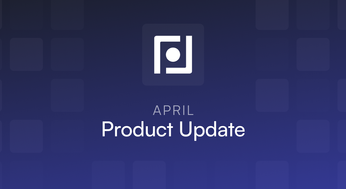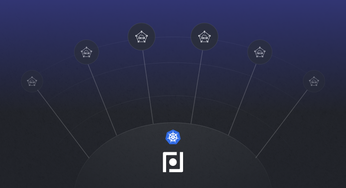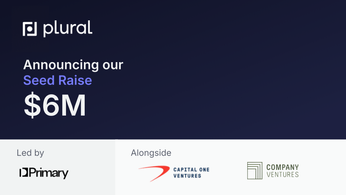
Kubernetes Cost Optimization: Actionable Strategies
Master Kubernetes cost optimization with actionable strategies to manage resources efficiently, reduce expenses, and enhance your cloud budget's effectiveness.
Table of Contents
Kubernetes offers incredible power and scalability, but it can also become costly. This guide provides actionable strategies to control your Kubernetes spending and maximize your resources. We'll cover common cost drivers, best practices for resource allocation and autoscaling, and practical tips for Kubernetes cost optimization. Learn how to build a leaner, more cost-effective Kubernetes environment without sacrificing performance. Let's get started.
Key Takeaways
- Manage Kubernetes Costs Proactively: Successfully using Kubernetes means understanding your resource usage, eliminating waste, and consistently monitoring your spending to maximize your investment without impacting performance.
- Right-Size Your Resources: Use strategies like setting resource requests and limits, implementing namespace-based quotas, and taking advantage of autoscaling to fine-tune resource allocation and avoid overspending. Regularly review and adjust your approach as needed.
- Track Spending and Resource Use: Select appropriate cost monitoring tools to understand your spending patterns and monitor important metrics like resource utilization, cost per pod, and idle resource time. This data-driven approach helps you make smart decisions and optimize your Kubernetes costs effectively.
Kubernetes Cost Optimization: A Practical Guide
What is Kubernetes Cost Optimization?
Kubernetes cost optimization is the process of managing and reducing your cloud spending on Kubernetes. Many companies find their costs increase after adopting Kubernetes, so learning how to control those costs is critical. It's not about sacrificing performance or availability—it's about understanding your resource usage and eliminating waste. Think of it as fine-tuning your system to get the most from your resources without overspending. This isn't a one-time fix. Cost optimization is an ongoing process of continuous monitoring and adjustments as your needs evolve. For a deeper dive, check out this helpful resource on Kubernetes cost optimization strategies.
Why is Kubernetes Cost Optimization Important?
Managing Kubernetes costs is essential for several reasons. It directly impacts your bottom line. Cost optimization is key to successful Kubernetes adoption and can significantly affect your business's profitability. Understanding the cost implications of different architectural decisions is crucial for effective cost management. The cost-effectiveness of Kubernetes depends on your specific use case and available resources. Proactively managing your Kubernetes costs ensures you're getting the most value from your investment and maximizing your return. Contact our team to discuss cost optimization strategies tailored to your needs.
Key Kubernetes Cost Drivers
Kubernetes offers incredible flexibility and scalability, but these benefits can come with hidden costs. Understanding the common cost drivers is the first step toward optimizing your Kubernetes spending. Let's break down some key areas where costs can quickly accumulate:
Over-Provisioning: How Much is Too Much?
One of the biggest culprits of runaway Kubernetes costs is over-provisioning resources. This happens when you allocate more CPU, memory, or storage to your applications than they actually need. Think of it like renting a huge truck to move a small desk—you're paying for space you won't use. Understanding your application’s capacity needs and setting appropriate resource requests and limits is crucial. Accurately estimating these requirements can significantly reduce waste and lower your overall Kubernetes expenses.
Resource Allocation: Optimizing for Efficiency
Even with the right amount of resources, inefficient allocation can still lead to higher costs. This might involve running applications on node types that are more powerful (and expensive) than necessary, or spreading workloads unevenly across your cluster. The key here is visibility. You need to understand where your resources are being used and identify areas where you can consolidate or redistribute workloads more effectively. Optimizing your resource allocation doesn't mean sacrificing performance—it's about eliminating waste and ensuring you're getting the most out of your infrastructure investment.
The Importance of Setting Resource Requests
Setting resource requests in Kubernetes is fundamental for cost-effective management. Resource requests specify the minimum CPU and memory each container needs, preventing over-provisioning—a major source of unnecessary cloud spending. Over-provisioning, much like "renting a huge truck to move a small desk," leads to significant waste, as highlighted by CloudZero. Accurately defining these requests ensures your applications have the necessary resources without excessive costs.
Beyond cost control, resource requests enhance application performance and stability. Kubecost emphasizes the importance of these requests for managing Kubernetes costs effectively. Properly set requests allow Kubernetes to make informed scheduling decisions, optimizing resource distribution and preventing resource starvation. Using resource quotas in conjunction with resource requests adds another layer of control, preventing runaway resource consumption within a namespace.
Tools like the Horizontal Pod Autoscaler (HPA) and Vertical Pod Autoscaler (VPA) dynamically adjust resources based on real-time demand. These autoscalers work in tandem with resource requests, ensuring efficient resource utilization during workload fluctuations. Regularly reviewing and adjusting your resource requests based on actual usage, combined with autoscaling, creates a lean, efficient Kubernetes environment, maximizing your cloud budget and ensuring optimal application performance. For a streamlined approach to managing these resources across your entire fleet, consider using a platform like Plural to simplify these configurations.
Identifying and Eliminating Unused Resources
Idle resources are another common source of wasted spending in Kubernetes. These can include underutilized nodes, orphaned volumes, or even entire clusters that are running but not serving any active applications. Minimizing the number of running nodes is a key strategy here. Leveraging features like horizontal and vertical autoscalers, along with cluster autoscalers, can help you dynamically adjust your resource capacity based on actual demand. This ensures you're only paying for the resources you need, when you need them.
Controlling Data Transfer and Storage Costs
Don't overlook the costs associated with data transfer and storage within your Kubernetes cluster. Moving large amounts of data between availability zones or regions can rack up significant charges. Similarly, storing data on more expensive storage classes than necessary can also inflate your bill. Strategies like minimizing traffic between zones, using databases instead of local drives for persistent data, and choosing the right storage class for your needs can all contribute to significant cost savings. Consider exploring cost optimization strategies to manage these expenses effectively.
Understanding Data Transfer Costs
Data transfer costs in Kubernetes can be a hidden drain on your budget. Think of it like roaming charges on your phone—small at first, but they can quickly add up. Within a Kubernetes cluster, moving large volumes of data between availability zones or regions incurs costs. For example, if your application in zone A constantly accesses a database in zone B, those inter-zone transfer fees accumulate. Similarly, serving users globally from a cluster in a single region can lead to significant data transfer expenses. Optimizing data locality—keeping your data close to the applications that use it—is key. This might involve deploying your application and database in the same zone or using a content delivery network (CDN) to cache data closer to your users. Understanding your data flow and strategically placing your resources is crucial for minimizing these costs. Check out this resource on Kubernetes cost optimization for more strategies.
Controlling Local Storage Costs
Storage costs, like data transfer costs, require careful consideration in Kubernetes. Choosing the right storage class for your workload is essential. Kubernetes offers various storage classes with different performance characteristics and prices. Using high-performance storage for data that doesn't require it is like paying for overnight shipping when ground delivery is sufficient. For example, storing logs on a fast, expensive SSD when a slower, cheaper HDD would suffice is wasteful. Evaluate your application's storage needs and select the most cost-effective option. Consider dynamic provisioning to automatically allocate storage based on demand, preventing over-provisioning. Regularly reviewing and deleting unused data also contributes to cost savings. For a deeper dive into storage optimization, see this helpful guide.
Best Practices for Kubernetes Cost Optimization
Optimizing your Kubernetes costs isn't about cutting corners; it's about using your resources wisely. Here are some actionable strategies to help you get the most from your Kubernetes deployments without overspending.
Setting Resource Requests and Limits
Understanding your application's capacity needs is the first step. By setting resource requests and limits for your pods, you ensure each application gets the resources it needs—and only the resources it needs. This prevents over-provisioning and keeps costs in check. Think of it like ordering ingredients for a recipe—enough to make the dish, but not so much that you have leftovers. With Plural, managing these resources becomes significantly easier, allowing for more precise control and optimization.
Optimizing Container Resource Requests and Limits
Understanding your application's capacity needs is the first step in cost optimization. By setting resource requests and limits for your pods, you ensure each application gets the resources it needs—and only the resources it needs. This prevents over-provisioning and keeps costs in check. Think of requests as reservations and limits as the maximum allowed consumption. Requests guarantee resources are available, while limits prevent runaway resource usage and unexpected costs. Accurately estimating these requirements is crucial. For practical guidance, refer to CloudZero's insights on Kubernetes cost optimization. Using a platform like Plural can simplify the management of these resources, providing better control and optimization.
Automatic Volume Resizing
Storage costs can quickly add up in Kubernetes. Using Persistent Volume Claims (PVCs) and storage classes allows for dynamic provisioning, giving you flexibility and control. Enabling automatic volume resizing ensures your applications have the storage they need without manual intervention. This is especially useful for stateful applications where storage requirements might change over time. By leveraging PVCs and automatic resizing, you avoid the costs associated with over-provisioning storage and simplify storage management. This best practice, highlighted in Kubecost's guide on Kubernetes cost optimization, contributes to a more efficient and cost-effective Kubernetes environment.
Using Namespace-Based Resource Quotas
Namespaces are a great way to organize your Kubernetes deployments, and they can also be powerful cost-control tools. By implementing resource quotas at the namespace level, you can track resource usage and enforce limits per team or per project. This helps prevent runaway costs and ensures fair resource allocation across your organization. This granular control is further enhanced by platforms like Plural, which offer streamlined management of namespaces and quotas.
Optimizing Your Container Images
Your container images are the foundation of your Kubernetes deployments, so optimizing them for size and efficiency is crucial. Smaller images mean faster startup times and lower storage costs. Review your images for unnecessary dependencies or bloat. Consider using multi-stage builds to create leaner images, and always follow best practices for resource requests, limits, and probes. Tools like Plural can help automate and simplify image management, ensuring optimal configuration for cost efficiency.
Leveraging Spot Instances for Cost Savings
For workloads that can tolerate interruptions, like batch processing or testing environments, spot instances can offer significant cost savings—up to 90% compared to on-demand instances. By leveraging these less expensive, transient resources, you free up your on-demand capacity for critical, high-availability applications. Managing spot instances effectively can be complex, but platforms like Plural simplify the process, making it easier to integrate them into your cost-optimization strategy.
Understanding the Trade-offs of Spot Instances
Spot instances offer compelling cost savings, but it's essential to understand the trade-offs before incorporating them into your Kubernetes strategy. The primary consideration is their transient nature: spot instances can be interrupted with short notice if demand for on-demand capacity increases. This makes them unsuitable for critical, production applications requiring high availability. However, for fault-tolerant workloads like batch processing or testing environments, spot instances present a valuable opportunity to significantly reduce costs—often by as much as 90% compared to on-demand instances. This frees up your on-demand resources for applications that prioritize stability and consistent uptime.
Effectively managing spot instances can introduce complexity. You'll need mechanisms to handle interruptions gracefully, such as automatically restarting workloads on new spot instances or shifting to on-demand capacity when necessary. Platforms like Plural simplify this management overhead, providing tools and automation to seamlessly integrate spot instances into your Kubernetes deployments. By carefully considering workload suitability and implementing appropriate management strategies, you can leverage spot instances' cost benefits without compromising the reliability of your critical applications.
Rightsizing Resources in Kubernetes
Regularly review your resource allocation and adjust as needed. Don't let your cluster run with more nodes than necessary. Use horizontal and vertical autoscalers and cluster autoscalers to dynamically adjust the size of your deployments based on actual demand. This ensures you only pay for the resources you actively use and helps avoid overspending on idle capacity. Plural's automated scaling features can further enhance this process, ensuring your cluster is always right-sized for optimal performance and cost-effectiveness. Book a demo to see how Plural can help you achieve this.
Autoscaling for Kubernetes Cost Efficiency
Autoscaling dynamically adjusts your Kubernetes resources to match real-time demand. This means you only pay for what you use, avoiding the costs of over-provisioning while ensuring your applications perform reliably. Kubernetes offers three main types of autoscaling:
Horizontal Pod Autoscaling (HPA): A Deep Dive
Horizontal Pod Autoscaling (HPA) automatically increases or decreases the number of pods in your deployments, replica sets, and stateful sets based on metrics like CPU utilization, memory usage, or custom metrics. Picture your e-commerce site experiencing a traffic surge during a flash sale. HPA automatically spins up additional pods to handle the load, ensuring a smooth customer experience. Once the sale ends and traffic subsides, HPA scales down the number of pods, saving you money on unused resources. Learn more about configuring HPA.
Vertical Pod Autoscaling (VPA): Getting Started
Vertical Pod Autoscaling (VPA) automatically adjusts the CPU and memory requests and limits for your pods based on their actual resource consumption. This optimizes resource allocation and prevents over-provisioning. VPA analyzes the historical resource usage of your pods and recommends optimal settings. This ensures your applications have the resources they need without wasting money on unnecessarily large allocations. For more details, explore the VPA documentation. While VPA is helpful, remember that your pods will need to restart for changes to take effect. Plan accordingly to minimize disruption.
Implementing Cluster Autoscaling
Cluster Autoscaling automatically adjusts the size of your Kubernetes cluster by adding or removing nodes as needed. If your application needs more resources than currently available, Cluster Autoscaling adds new nodes. Conversely, if nodes are underutilized, it removes them to reduce costs. This ensures you have the right amount of compute capacity, preventing resource shortages and minimizing wasted spending. For a deeper understanding, review the Cluster Autoscaling features. Tools like Plural can simplify the management of Cluster Autoscaling, allowing you to easily configure and monitor your cluster's scaling behavior. Schedule a demo to see how Plural can help.
Essential Tools for Kubernetes Cost Monitoring
Getting a handle on your Kubernetes costs requires the right tools and a solid understanding of your resource consumption. Think of it like managing your personal finances—you need to know where your money is going before you can create a budget. This section covers how to track, analyze, and manage your Kubernetes spending effectively.
Tracking and Analyzing Resource Usage
Kubernetes cost optimization is crucial for managing and reducing cloud expenses, especially since many companies see costs rise after adopting Kubernetes. Optimizing doesn't mean sacrificing performance or availability. The key is visibility into your resource usage and eliminating waste, much like identifying unnecessary subscriptions in your personal budget. Start by understanding which deployments, services, and namespaces consume the most resources. This granular view helps pinpoint areas ripe for optimization. For example, you might discover a development environment consuming significant resources even after hours, presenting a clear opportunity for savings.
Cost Allocation and Chargeback
Once you understand where your resources are going, allocating costs to specific teams or projects becomes essential. This is where chargeback comes in. By assigning costs to the teams responsible, you create accountability and encourage cost-conscious development practices. Think of it as giving each team a budget within your larger Kubernetes budget. Tools like CloudZero, Cloudability, Spot by NetApp, Kubecost, and AWS Cost Explorer offer valuable insights and automation for cost allocation and optimization. These tools provide deep visibility into Kubernetes costs, essential for informed decisions.
Implementing Usage Metering in Kubernetes
Usage metering takes cost tracking a step further by measuring the actual consumption of resources by different parts of your Kubernetes infrastructure. This detailed tracking allows for more precise chargeback mechanisms and identifies areas where resource quotas might be beneficial. Google Kubernetes Engine (GKE) offers usage metering features, along with tools like Metrics Server and Kubernetes Resource Quotas, to help track resource usage and enforce cost-optimized configurations. These tools allow you to effectively monitor your environment and ensure efficient resource allocation.
Top Cost Monitoring Tools for Kubernetes
Several tools are designed to help monitor and manage Kubernetes costs. CAST AI is known for its automated optimization, potentially saving users 50-90% on their cloud spend. Kubecost offers insights that, when implemented, can lead to savings of 30-50% or more. Choosing the right tool depends on your specific needs and how much hands-on management you're comfortable with. Consider factors like your cluster's size, your team's expertise, and your budget when making your decision.
ProsperOps for Spot Instance Management
For workloads that can tolerate interruptions, such as batch processing or testing environments, spot instances offer significant cost savings—up to 90% compared to on-demand instances. Managing spot instances effectively can be complex due to their volatile pricing and availability. ProsperOps automates this, dynamically adjusting your spot instance usage to optimize costs while minimizing the risk of interruptions. This frees up your on-demand capacity for critical, high-availability applications.
Xosphere for Cloud Pricing Optimization
Navigating the complexities of cloud pricing can be a challenge. Xosphere assists in optimizing cloud pricing by providing insights into your spending patterns and recommending cost-effective resource allocation strategies. Xosphere helps organizations understand their cloud costs and ensures they leverage the most cost-effective resources, contributing to a more efficient and cost-conscious Kubernetes environment.
Multi-Cloud Cost Implications
Running Kubernetes across multiple cloud providers introduces unique cost management challenges. Distributing your workloads offers redundancy and flexibility, but it also adds complexity to budgeting and cost analysis. Each cloud provider has its own pricing models, resource allocation strategies, and even service terminology. A "compute instance" in one cloud might be a "virtual machine" in another, with costs varying based on region, availability, and size. This makes direct cost comparisons difficult and requires a nuanced approach to optimization. For a deeper understanding of these complexities, see ScaleOps' insights on Kubernetes cost management.
Gaining visibility into spending across all environments is crucial. You need to aggregate cost data from different sources and normalize it for analysis. Without a unified view, it's hard to identify overspending or leverage cheaper resources in a different cloud. Tools like Kubecost and Active Assist provide cross-cloud visibility, tracking spending and resource utilization across your Kubernetes footprint. This insight is essential for informed decisions about resource allocation and workload placement. Kubecost's guide on managing multi-cloud Kubernetes costs offers further valuable insights.
Consider the architectural implications of your multi-cloud strategy. Transferring large amounts of data between providers can incur significant egress charges. Different storage classes across clouds can also lead to unexpected cost discrepancies. When designing your architecture, think about data locality, network traffic, and the cost trade-offs of different storage options. Optimizing these factors significantly impacts overall spending. TechTarget's best practices highlight disaster recovery, resource allocation, cost management, and compliance as critical aspects of a successful multi-cloud Kubernetes strategy.
Cost optimization in a multi-cloud environment is an ongoing process. Cloud providers update pricing, and your application needs evolve. Regularly review resource utilization, explore cost savings, and adjust your strategy. Amnic's best practices for Kubernetes cost optimization offer practical guidance. Plural can automate and streamline many of these tasks, simplifying multi-cloud Kubernetes management and controlling costs. Contact our team to discuss how Plural can help.
Effective Kubernetes Resource Management
Efficient resource management is key to controlling Kubernetes costs. Think of your cluster resources like a carefully planned budget—you want every bit working effectively. Here’s how to fine-tune your resource allocation:
Prioritizing Pods and Preemption
Prioritizing pods ensures critical workloads always have the resources they need, even when resources are scarce. Kubernetes offers a preemption feature where a higher-priority pod can evict a lower-priority pod if necessary. This is especially helpful during peak usage or unexpected spikes in demand. By defining pod priorities, you create a hierarchy for resource allocation, ensuring your most important applications remain operational. This prevents performance degradation and ensures a smooth user experience, even under pressure. As CloudZero points out, optimizing Kubernetes costs doesn't require sacrificing performance or availability—it's about eliminating waste and using what you have effectively.
Using Node Affinity and Anti-Affinity Rules
Think of affinity and anti-affinity rules as guidelines for where your pods should (or shouldn’t) reside within your cluster. Node affinity lets you schedule pods on nodes with specific labels, like a particular hardware type or location. This is useful for applications with specific hardware requirements. Conversely, node anti-affinity prevents pods from being scheduled on the same node, improving resilience. This is crucial for high-availability setups where you want to avoid single points of failure. By distributing your workloads strategically, you can optimize resource utilization and improve the overall performance and reliability of your applications, much like the best practices Google Cloud recommends for cost-optimized Kubernetes applications.
Taints and Tolerations for Scheduling
Taints and tolerations offer a more advanced way to control pod placement. Taints are attributes you apply to a node, indicating that it should repel certain pods. Tolerations, applied to pods, allow them to be scheduled on tainted nodes. This mechanism is useful for dedicating specific nodes to particular workloads or preventing certain pods from running on nodes that lack the necessary resources. For example, you might taint a node dedicated to machine learning workloads and then configure only your machine learning pods to tolerate that taint. This level of control allows for more efficient scheduling and resource utilization across your cluster, similar to how multi-tenancy solutions can optimize resource sharing, as highlighted by Loft.
Optimizing Storage and Network Costs
Optimizing storage and network costs is crucial for keeping your Kubernetes deployments efficient. Here’s how to refine your approach:
Choosing the Right Storage Class
Think of storage classes as profiles that define how storage is provisioned. Kubernetes offers different storage classes, each with varying performance and cost characteristics. Using databases instead of local drives for persistent data storage is a smart move. This not only helps reduce costs but also improves data management and accessibility. For example, if you have data that doesn't need to be accessed frequently, using a less expensive storage class like standard persistent disk instead of a high-performance SSD can lead to significant savings. Explore the available storage classes within your cloud provider and select the one that best suits your application's needs and budget.
Implementing Dynamic Volume Provisioning
Dynamic volume provisioning lets Kubernetes automatically create storage volumes as needed. This is a game-changer for optimizing resource usage and reducing costs. Instead of manually pre-allocating storage, dynamic provisioning ensures you only use and pay for what you need, preventing over-provisioning and unnecessary expenses.
Utilizing Storage Tiering for Cost Optimization
Similar to choosing the right storage class, storage tiering involves using different storage classes based on the performance and cost requirements of your applications. This strategy allows you to allocate high-performance storage to critical applications while using more cost-effective options for less demanding workloads. For instance, you might use SSDs for your production database and standard persistent disks for backups or less frequently accessed data. This guide offers valuable information on storage tiering.
Minimizing Egress Traffic Costs
Data transfer costs, also known as egress traffic, can quickly add up. Minimize these charges by reducing traffic between availability zones and regions. Design your application architecture to keep data transfers local whenever possible. If you're working with a multi-region deployment, consider using a content delivery network (CDN) to cache static assets closer to your users, reducing the amount of data that needs to be transferred from your origin server. For more strategies on minimizing egress traffic and optimizing network costs, explore this helpful resource.
Measuring Kubernetes Cost Optimization Success
After implementing cost-saving measures, how do you know they're working? Tracking the right metrics and KPIs is crucial to understanding the impact of your optimization efforts. This allows you to demonstrate the value of your work and identify areas for further improvement.
Key Resource Utilization Metrics
Getting a clear picture of your resource utilization is the first step. How much CPU, memory, and storage are your applications actually using? Tools like those offered by CloudZero can provide this granular level of visibility. Without this data, you're essentially working in the dark. Optimizing Kubernetes costs hinges on understanding resource usage and eliminating waste. By tracking metrics like CPU utilization, memory usage, and disk I/O, you can pinpoint areas where resources are over-provisioned or underutilized. This data-driven approach ensures you're not paying for resources you don't need.
Calculating Cost per Pod and Cluster Efficiency
Think of cost as another operational metric, just like performance and uptime. Tracking cost per pod helps you understand the efficiency of individual deployments. Are certain pods consistently more expensive than others? This could point to areas for optimization within those specific applications. Similarly, evaluating overall cluster efficiency helps you understand how well you're utilizing your entire Kubernetes infrastructure. Are there nodes sitting idle? Are pods spread efficiently across the cluster? CloudZero reinforces the importance of tracking costs as an operational metric, similar to performance and uptime. This allows you to understand the impact of changes within your Kubernetes environment.
Analyzing Idle Resource Time and Pod Density
Idle resources are wasted resources. Tracking idle resource time helps you identify deployments that might be over-provisioned. If a pod consistently uses only a small fraction of its allocated resources, you can likely reduce its resource requests and limits without impacting performance. Related to this is pod density—how effectively are you packing pods onto your nodes? Higher pod density generally translates to better resource utilization and lower costs. Google Cloud's best practices highlight the importance of understanding application capacity and setting appropriate resource requests and limits. Over-provisioning can lead to significant cost increases, making it vital to optimize pod density and resource allocation. By monitoring idle time and pod density, you can fine-tune your resource allocation strategy and maximize your cluster's efficiency.
Strategies for Long-Term Cost Optimization
Successfully managing Kubernetes costs isn't a one-time fix; it requires a long-term strategy. Think of it like tending a garden—consistent care and attention yield the best results. Here’s how to cultivate a cost-efficient Kubernetes environment over time:
Continuous Monitoring and Optimization
Cost optimization is an ongoing process. Regularly analyzing your resource usage and associated costs helps identify areas for improvement and implement changes that lead to significant savings over time. Just as you would monitor application performance, keep a close eye on your spending. Services like CloudZero offer tools specifically designed for Kubernetes cost analysis. Consistently tracking your resource consumption allows you to spot trends, identify anomalies, and make informed decisions about resource allocation.
Plural's Role in Continuous Cost Optimization
Managing Kubernetes costs effectively requires a proactive, continuous approach to resource management and optimization, not just ad-hoc checks and manual adjustments. This is where Plural excels. Plural simplifies many aspects of Kubernetes management, directly contributing to long-term cost optimization.
Consider Plural your Kubernetes co-pilot, constantly working to ensure your cluster runs as efficiently as possible. Here's how Plural helps control costs:
- Simplified Autoscaling: Tools like Plural simplify managing Horizontal Pod Autoscaling (HPA), Vertical Pod Autoscaling (VPA), and Cluster Autoscaler, letting you easily configure and monitor your cluster's scaling. This dynamic scaling ensures you only pay for resources when needed, eliminating idle, over-provisioned nodes that drain your budget. This aligns with CloudZero's recommendations for efficient Kubernetes cost management.
- Streamlined Resource Management: Plural makes managing resource requests and limits easier, allowing more precise control and optimization. This granular control over resource allocation prevents overspending and ensures each application gets the resources it needs to perform optimally. This reflects CloudZero's emphasis on precise resource control for cost optimization in Kubernetes.
- Centralized Control and Visibility: Plural provides a single view for managing your entire Kubernetes fleet. This centralized view simplifies identifying and eliminating unused resources, optimizing resource allocation across clusters, and tracking spending. This enhanced visibility is crucial for identifying cost-saving opportunities and ensuring efficient resource use.
By automating key aspects of Kubernetes management, Plural empowers a proactive, continuous approach to cost optimization. This reduces cloud spending and frees your team to focus on building and deploying applications.
Regular Audits and Cost Reviews
Set a regular cadence for cost reviews, similar to how you schedule performance reviews. These audits provide a comprehensive snapshot of your Kubernetes environment, revealing inefficiencies and areas where you can reduce costs. Treat cost tracking as an operational metric, on par with uptime and performance. This practice allows you to understand the financial impact of infrastructure changes. Regular cost reviews also help ensure that your cost-optimization efforts stay aligned with your overall business goals.
Promoting Cost-Aware Development
Building a cost-conscious culture is crucial for long-term success. Educate your development and operations teams about cost-saving practices and the impact of their decisions. For example, encourage your team to choose the right storage class for their applications. When everyone understands the relationship between resource usage and cost, they can make more informed choices that contribute to overall cost optimization. Google Cloud emphasizes the importance of this shared responsibility in their best practices for cost-optimized Kubernetes applications.
Leveraging Committed-Use Discounts
If your workloads are predictable, consider leveraging committed-use discounts. These discounts offer significant price reductions on virtual machine usage, leading to substantial savings over time. Cloud providers like Google Cloud offer these programs, allowing you to lock in lower prices in exchange for a commitment to a certain level of usage. Explore the discount options available from your cloud provider to see if they align with your needs.
Reserved Instances and Savings Plans
When optimizing Kubernetes costs, reserved instances and savings plans can significantly reduce your cloud spending. These options let you commit to using a certain amount of cloud resources for a specific period (usually one or three years) for substantial discounts compared to on-demand pricing. Depending on the provider and plan details, discounts can range from 30% to 72%. This approach works well for predictable workloads where you understand your baseline resource needs. For example, if your cluster consistently needs a set number of nodes with specific CPU and memory configurations, reserved instances can offer significant savings.
Cloud providers like AWS, Google Cloud, and Azure offer various reserved instance and savings plan options. Understanding each program’s nuances is crucial for maximizing savings. Some plans offer more flexibility with instance size or family, while others provide steeper discounts for longer commitments. Carefully evaluate your workload characteristics and long-term infrastructure plans to choose the best plan.
While reserved instances offer substantial savings, consider the trade-offs. Committing to a specific instance type or family might limit your flexibility to adapt to changing workload demands or use newer instance generations. However, many providers offer options to modify or exchange reserved instances to mitigate this. By analyzing your workload patterns and understanding the reserved instance or savings plan terms, you can make informed decisions that maximize cost savings without compromising future adaptability. For more on reserved instances and savings plans, see CloudZero's guide to Kubernetes cost optimization.
Common Kubernetes Cost Optimization Mistakes
Falling into these common traps can negate your Kubernetes cost optimization efforts. Sidestep these issues to keep your spending in check.
Gaining Visibility into Resource Usage
First things first: you need to understand where your money is going. Many companies see costs rise after adopting Kubernetes, often due to a lack of visibility into resource consumption. Without a clear picture of what's using what, optimization becomes guesswork. Start by implementing tools and processes that give you granular insights into your resource usage. This will highlight areas ripe for optimization without impacting performance or availability. As CloudZero points out in their Kubernetes cost optimization guide, optimizing costs doesn't have to mean sacrificing performance.
Accounting for Logging Costs
Logging is essential, but it can also be a silent budget killer. It's easy to overlook these costs, but they can quickly add up—sometimes even surpassing the cost of your pod operations. Factor logging expenses into your cost management strategy from the start. CloudZero highlights this often-missed expense in their guide. Make sure you're not blindsided by hidden logging costs.
The Hidden Costs of Logging
Logging is essential for monitoring, debugging, and auditing your Kubernetes applications. However, it can also become a significant cost driver if left unchecked. Think of it like leaving the faucet running—a small drip can lead to a surprisingly large water bill over time. Similarly, the seemingly insignificant cost of storing and processing logs can quickly accumulate, sometimes even exceeding the cost of running your pods. It's easy to overlook these costs, especially when focused on optimizing resource allocation for your applications themselves. But ignoring logging expenses can undermine your overall cost-optimization efforts. For a deeper understanding of cost optimization in Kubernetes, check out this comprehensive guide.
Make sure you’re not blindsided by these hidden costs. Factor logging expenses into your cost management strategy from the start. This includes understanding how your logging infrastructure is priced, setting limits on log retention, and using efficient logging practices. For example, consider using log levels to control the verbosity of your logs, filtering out unnecessary noise, and reducing the volume of data you need to store. Explore strategies for Kubernetes cost optimization, including logging best practices, to gain better control over these often-hidden expenses. By proactively managing your logging costs, you can ensure this essential functionality doesn’t become a drain on your budget. Plural offers tools and features to help you manage and optimize your Kubernetes deployments, including logging configurations. Contact us to learn more about how Plural can help you control your Kubernetes costs.
The Importance of Continuous Monitoring
Optimizing your Kubernetes costs isn't a one-time project. It requires ongoing monitoring and adjustments. Think of it like tending a garden: consistent attention keeps things thriving. Regularly review your resource usage, identify areas for improvement, and tweak your configurations accordingly. CloudZero emphasizes this continuous approach in their discussion of Kubernetes cost optimization. Set up alerts and automated checks to stay on top of your spending.
Avoiding Unnecessary Clusters
While having separate clusters for different teams might seem organized, it can lead to unnecessary overhead and increased costs. Consolidating clusters, where feasible, can significantly reduce your infrastructure expenses and improve resource utilization. Loft's guide offers helpful insights into consolidating clusters effectively. Before spinning up a new cluster, carefully evaluate whether you can leverage existing infrastructure.
Frequently Asked Questions
Why are my Kubernetes costs so high?
Kubernetes itself doesn't inherently drive up costs, but the flexibility and scalability it offers can lead to overspending if not managed carefully. Common culprits include over-provisioning resources (allocating more than your applications need), inefficient resource allocation (running apps on unnecessarily powerful nodes), unused resources (idle nodes or orphaned volumes), and data transfer/storage costs. Regularly reviewing your resource usage and adjusting your configurations can significantly lower your Kubernetes expenses.
How can I optimize my Kubernetes costs without impacting performance?
Cost optimization isn't about sacrificing performance—it's about eliminating waste and maximizing efficiency. Start by accurately setting resource requests and limits for your pods, ensuring your applications get the resources they need without overspending. Implement namespace-based resource quotas to track usage and enforce limits per team or project. Optimize your container images for size and efficiency, and consider using spot instances for non-critical workloads. Regularly review and adjust your resource allocation, leveraging autoscaling to dynamically adapt to changing demands.
What are the key metrics to track for Kubernetes cost optimization?
Focus on resource utilization metrics (CPU, memory, storage), cost per pod and overall cluster efficiency, idle resource time, and pod density. These metrics provide insights into where your resources are going and how effectively you're using them. By tracking these key indicators, you can identify areas for improvement and measure the impact of your optimization efforts. Remember, cost should be treated as an operational metric, just like performance and uptime.
What tools can help me manage my Kubernetes costs?
Several tools are available to help you monitor, analyze, and manage your Kubernetes spending. CloudZero, Cloudability, Spot by NetApp, Kubecost, and AWS Cost Explorer offer valuable insights and automation for cost allocation and optimization. CAST AI and Kubecost are specifically known for their automated optimization capabilities. The best tool for you will depend on your specific needs, cluster size, team expertise, and budget.
What's the most important thing to remember about Kubernetes cost optimization?
It's an ongoing process, not a one-time fix. Regular monitoring, analysis, and adjustments are crucial for long-term cost efficiency. Cultivate a cost-conscious culture within your team, educate developers and operations staff on cost-saving practices, and conduct regular cost reviews. By making cost optimization a continuous effort, you can ensure you're getting the most value from your Kubernetes investment.
Related Articles
Newsletter
Join the newsletter to receive the latest updates in your inbox.









